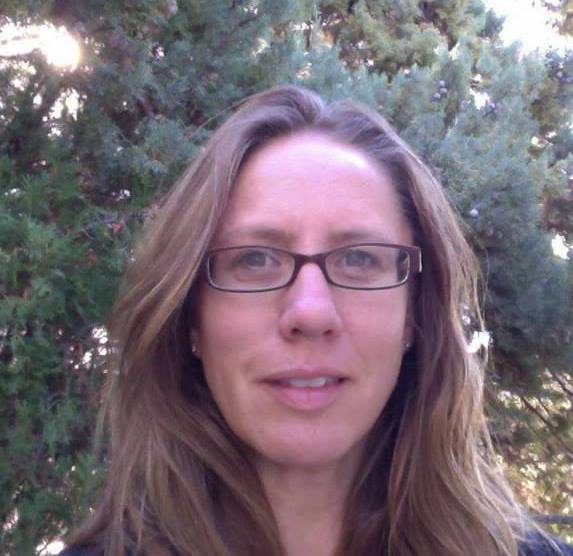I am available to travel as a visiting writer for readings, classroom visits, and workshops. Please see my Contact page for more information.
Teresa of the New World Teacher’s Guide
By Catalina Claussen and Sharman Apt Russell
Teresa of the New World is set in the 16th century of the American Southwest and northern Mexico and explores through the eyes of the young teen Teresa the social and cultural landscape of Spanish conquistadors, missionaries, and the indigenous tribes they encountered. The daughter of a Capoque mother and the Spanish conquistador Cabeza de Vaca—a real-life adventurer shipwrecked in Florida in 1528 and reappearing in New Spain eight years later–Teresa is infused with the knowledge of the desert, listening to the voices of the earth and animals and plants around her. Taken by her father from her home in coastal Texas and then abandoned by him in the household of a Spanish official, the sixteen-year-old must learn to find her own way in the tumultuous New World. This young adult novel offers middle and high school students a unique blend of Texas, New Mexico, and Arizona history, ethnobotany, and an intimate look at the encounters between Spanish and native cultures.
The teaching guide for Teresa of the New World provides interdisciplinary class activities, discussion questions, journal prompts, chapter summaries and reading comprehension questions, vocabulary exercises, and ACE questions aligned to Common Core standards for English Language Arts (ELA). Instructors will also find a set of resources that form the foundation of teaching ELA in the age of Common Core, including links to the development of pattern folders, guides to Socratic seminar and the ACE response method, and rubrics for discussion and written expression. Teachers can choose from a wide range of activities suitable for middle and high school students of varying ability.
Please click here Teresa of the New World Teaching Guide for a PDF of the full guide. And contact me, Sharman Apt Russell, if you have any questions or would like to use Teresa of the New World in your classroom. Perhaps I can come visit your class or Skype with your students. We can also set up a wiki or page on this website where your students can post their work. I would hope to engage with your class and readers as much as possible.
Except where noted, all photos in the guide were taken by Elroy Limmer.
And introducing the co-author of this curriculum guide, Catalina Claussen:
I am the founding English Language Arts instructor of Aldo Leopold Charter School, a school dedicated to leadership and sustainability in the 21st century, located in Silver City, New Mexico. English Language Arts instructors have a unique opportunity to provide youth with the tools to develop their own voice via critical reading strategies and written and spoken expression techniques. In addition to providing these fundamental skills, our school is dedicated to developing a sense of place in the natural world and in the community via a number of experiential education opportunities and internships in the local community. Our students graduate with a deeper understanding of themselves, the Gila and Aldo Leopold Wilderness areas, and the skills they can offer the local community and beyond. This fall we are celebrating our tenth year of encouraging students to live a life instilled with connections to the land and to one another.
My training includes a Bachelor of Arts in American Studies from Reed College, a Master of Arts in Education from Prescott College, and a Master of Arts in Interdisciplinary Studies (English, Writing, and Bilingual Education) from Western New Mexico University. In my seventeen years of teaching I have taught middle school ELA for six years in public and private schools, high school ELA for eleven years, and English for Academic Purposes for adult and high school students at Harvard University and Phillips Academy respectively during the summers. I hike, hunt, fish, garden, ski, scuba dive, write, sing, swim, speak French, travel, and do just about anything that gets me out into the world. I have a true passion for life, living sustainably, and learning. These are the greatest gifts we can pass on to our students.
Below are links to the resources named in the guide.
Resources:
Pattern Folders:
Wessling, Sarah Brown. “Pattern Folders: A Literary Analysis Tool.” Teaching Channel: Getting Better Together. https://www.teachingchannel.org/videos/literary-analysis-tool.
Story Chart:
http://www.gopixpic.com/1275/literary-elements-chart/http:%7C%7Cimg*docstoccdn*com%7Cthumb%7Corig%7C9870606*png/.
Graphic Organizers:
Concept Web: http://www.mymindmap.net/Mind_Map_Templates.html
Venn Diagram: http://www.cehd.umn.edu/DHH-resources/Reading/venn.html
Flow or Process Chart: https://allfreecharts.wordpress.com/2011/02/28/hello-world-2/process-chart-blank-150/
Common Figures of Speech:
Nordquist, Richard. “Top 20 Figures of Speech.” About Education. http://grammar.about.com/od/rhetoricstyle/a/20figures.htm.
Socratic seminar method and rubric:
Hansen, Alia. “Socratic Seminar Student Handout.” Slideshare.net. 23 June 2013. http://www.slideshare.net/aliahanson/socratic-seminars-handout-s.
ACE strategy and rubric:
http://wiki.fms.k12.nm.us/sandbox/groups/middleschoolteachingideas/wiki/70cd3/attachments/626b5/ACE%20Strategy.pdf?sessionID=a9033dbe8d46988e691e211bc536073fcf5d0271
Image of jaguar by Bjørn Christian Tørrissen [CC BY-SA 3.0 (http://creativecommons.org/licenses/by-sa/3.0) or GFDL (http://www.gnu.org/copyleft/fdl.html)], via Wikimedia Commons


